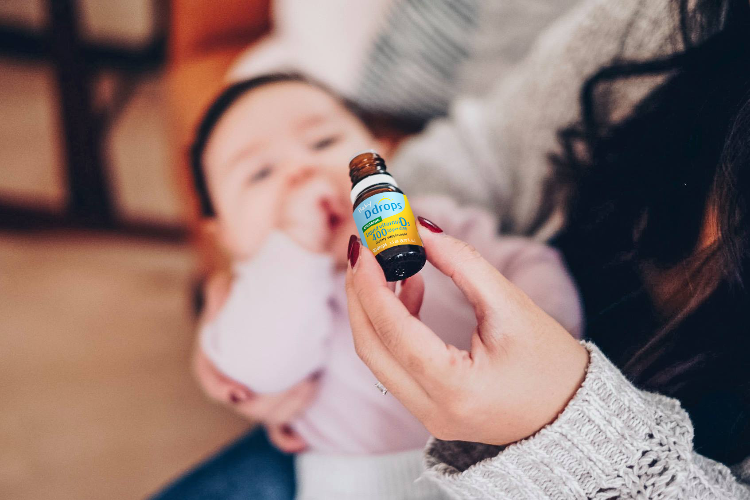15 Ogos 2016
Pada masa kini, pengamal penjagaan kesihatan mereka mengesyorkan suplemen vitamin D, walaupun tiada tanda-tanda kekurangan vitamin D.[7] Namun begitu, ini membuatkan kita terfikir...mengapa? Adakah masalah? Bolehkah anda mengalami kekurangan vitamin D? Adalah lebih baik untuk menjelaskan dan membincangkan perkara ini dengan profesional penjagaan kesihatan anda. Ia juga merupakan idea yang baik untuk mengetahui lebih lanjut.
Bagaimana orang tahu jika mereka kurang vitamin D?
Pakar mentakrifkan kekurangan vitamin D dari segi tahap darah. Terdapat tahap yang berbeza bagi paras darah vitamin D 'rendah' yang mencirikan julat kekurangan vitamin D, dan ini berbeza dari satu negara ke negara dan rantau ke rantau berdasarkan cadangan vitamin D setempat. Ujian darah dilaporkan dalam nilai yang berbeza untuk negara yang berbeza. Terdapat ujian darah lain (iaitu kalsium, fosforus, 25(OH)D, dsb.) dan kadangkala imbasan tulang juga dipertimbangkan. Doktor biasanya akan melakukan pemeriksaan fizikal, dengan perhatian khusus kepada pembentukan tulang dan kekuatan otot. Mereka juga mungkin bertanya kepada anda tentang kelembutan.
Ujian darah vitamin D [1]
Pakar perubatan menentukan sama ada seseorang itu kekurangan vitamin D atau tidak dengan melakukan ujian darah mudah. Ujian darah sebenarnya direka untuk mencari penanda vitamin D dalam darah yang beredar, 25-hydroxyvitamin D, atau 25(OH)D₃ atau 25(OH)D (calcidiol) – metabolit utama vitamin D₃ yang terdapat dalam aliran darah . Di Amerika Syarikat, kebanyakan keputusan makmal vitamin D dilaporkan dalam ng/mL. Di Kanada dan UK, nilai dilaporkan dalam nmol/L. (Lihat jadual di bawah).
Sesetengah orang kekurangan vitamin D lebih daripada yang lain; oleh itu, pakar telah membangunkan skala 'status pemakanan vitamin D'. Di Kanada, pemotongan kecukupan adalah lebih tinggi daripada di AS dan UK. Jadual di bawah menerangkan julat vitamin D dan kesihatan di Amerika Utara.
Amerika Syarikat: Serum 25-Hydroxyvitamin D [25(OH)D] Kepekatan dan Kesihatan*[2]
| Julat serum 25(OH)D₃ | Status pemakanan vitamin D |
| >50 ng/mL (>125nmol/L) | Bukti mengaitkan potensi kesan buruk kepada tahap yang tinggi, terutamanya>150 nmol/L (>60 ng/mL) |
| >20 ng/mL (50 nmol/L) | Sufficiency (desirable optimal for fracture prevention) |
| 12-20 ng/mL (30-50 nmol/L) | Ketidakcukupan |
| <12 ng/mL (30 nmol/L). | Deficient (diagnostic of nutrition deficiency, rickets or osteomalacia). |
Kanada: Tahap peredaran 25- hidroksil-Vitamin D atau 25(OH)D₃ mengikut status pemakanan vitamin D [3]
| Julat serum 25(OH)D₃ | Status pemakanan vitamin D |
| >600 nmol/L (>240 ng/mL) | Ketoksikan vitamin D |
| <225 nmol/L (<90 ng/mL) | Julat fisiologi daripada pendedahan kepada cahaya matahari (atau cahaya UV) |
| <75 nmol/L (>30 ng/mL) | Sufficiency (desirable optimal for fracture prevention) |
| <40 nmol/L (<16 ng/mL) | Ketidakcukupan |
| <25 nmol/L (>10 ng/mL) | Deficient (diagnostic of nutrition deficiency, rickets or osteomalacia). |
Apakah tahap vitamin D yang optimum?
Jawapannya tidak semudah yang disangkakan. Terdapat perbezaan pendapat tentang apa itu "kekurangan vitamin D" dan apa itu "kekurangan vitamin D". Mengapa kedua-dua klasifikasi ini? Julat "optimum" yang luas untuk paras darah vitamin D atau 25(OH)D dilaporkan antara 25-80 ng/mL atau 50 nmol/L – 225nmol/L.[4]
Untuk menguji paras darah vitamin D… atau tidak menguji?
Di sesetengah wilayah, contohnya di Kanada, pakar perubatan tidak secara rutin menguji paras darah vitamin D pada individu yang sihat, melainkan mereka mengesyaki kekurangan vitamin D.[5] Memandangkan ramai orang Kanada kekurangan vitamin D, pihak berkuasa kesihatan mengesyorkan agar orang ramai memberi tumpuan untuk mendapatkan vitamin yang mencukupi D sama ada secara semula jadi dan/atau dengan suplemen dan bukannya menghadapi masalah dan kos menjalani ujian darah.
Ramai profesional penjagaan kesihatan, berpandukan pengalaman praktikal mereka, mengesyorkan suplemen vitamin D tanpa ujian, walaupun pesakit mereka tidak mempunyai faktor risiko yang jelas atau tanda-tanda kekurangan[vi]. Ini sama seperti bayi. Ini berkemungkinan kerana pesakit mereka biasanya mempunyai pendedahan matahari harian yang tidak konsisten atau terhad dan/atau mereka mempunyai sedikit pengambilan vitamin D dalam makanan harian.
Ujian darah vitamin D boleh membantu pengamal penjagaan kesihatan untuk menilai kes yang disyaki kekurangan vitamin D dan membolehkan mereka mendiagnosis, memantau dan merawat keadaan jika perlu.
Bercakap dengan pengamal penjagaan kesihatan anda tentang status dan keperluan vitamin D individu anda. Ingat, produk Ddrops® tidak ditunjukkan untuk merawat atau membetulkan kekurangan vitamin D; Ddrops® bertujuan untuk membantu mengekalkan tahap darah vitamin D yang sihat.
[1] 25-hidroksi vitamin D ujian. Ensiklopedia Perubatan NIH https://www.nlm.nih.gov/medlineplus/ency/article/003569.htm[2] Institut Perubatan, Lembaga Makanan dan Pemakanan. Pengambilan Rujukan Pemakanan untuk Kalsium dan Vitamin D. Washington, DC: National Academy Press, 2010.
[3] Makmal, In-Common. Hubungi - Makmal In-Common, 18 Julai 2018
[4] Kennel et. al. Kekurangan Vitamin D pada Orang Dewasa: Bila Perlu Menguji dan Cara Merawat. Mayo Clin Proc. 2010 Ogos; 85(8): 752–758. https://www.ncbi.nlm.nih.gov/pmc/articles/PMC2912737/
[5] "Maklumat Awam." Ujian Vitamin D - Pelan Insurans Kesihatan Ontario - Program Kementerian - Maklumat Awam - MOHLTC, Kerajaan Ontario, Kementerian Kesihatan dan Penjagaan Jangka Panjang
[6] Kennel et. al. Kekurangan Vitamin D pada Orang Dewasa: Bila Perlu Menguji dan Cara Merawat. Mayo Clin Proc. 2010 Ogos; 85(8): 752–758. https://www.ncbi.nlm.nih.gov/pmc/articles/PMC2912737/
[7] Kennel et. al. Kekurangan Vitamin D pada Orang Dewasa: Bila Perlu Menguji dan Cara Merawat. Mayo Clin Proc. 2010 Ogos; 85(8): 752–758. https://www.ncbi.nlm.nih.gov/pmc/articles/PMC2912737/




ทิ้งข้อความไว้
เว็บไซต์นี้ได้รับการคุ้มครองโดย hCaptcha และมีการนำนโยบายความเป็นส่วนตัวของ hCaptcha และข้อกำหนดในการใช้บริการมาใช้